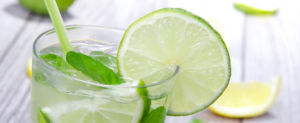Today’s consumers expect their beverages to do more than quench thirst and provide excellent taste.
The average consumer is always on the lookout for ways to enhance their health and wellness and want the drinks they enjoy to contribute to that. Many beverages today contain ingredients aimed at helping consumers address a number of issues, from the need for an energy boost to improving cognitive function and even aiding sleep and relaxation.
As these needs become more multifaceted and complex, the ingredients formulators employ to deliver health and wellness benefits become more complex and exotic. Product developers are now incorporating an unprecedented range of ingredients to meet these challenges, including botanicals, fibers, plant proteins, vitamins, and minerals.
Botanicals are perhaps the hottest trend in better-for-you beverage development. They offer the benefit of imparting flavor as well as a health halo. Popular examples are ginger, mint, cinnamon, and spices. But there also are botanical components that can be added to deliver a specific active ingredient with a specific perceived nutraceutical benefit.
Botanical extracts are derived from leaves or seeds of the plant. Some are not water-soluble and so require stabilization and/or use of an emulsifier to distribute them uniformly throughout the product. Some also contain compounds that have undesirable organoleptic properties, such as bitterness or astringent notes and could require development of a custom raw material for a beverage application. This could include either exclusion of the offending compounds during extraction, encapsulation to help with solubility issues, or use of bitterness blockers or flavor maskers to cover the undesired flavor notes.
A benefit to developers is that the health and wellness consumer often has a more adventurous palate and might be more forgiving of, and more willing to experiment with, less traditional flavor profiles that may pair well with the natural notes of beverages containing botanical extracts. Some examples are cucumber-mint, blueberry-hibiscus, carrot-turmeric, or peach-ginger.
Fortification Power in Beverages
Vitamins and minerals used to enhance nutrition have long been staples in the food aisle, but they are increasingly seen as singled out or paired with another ingredient for a specific benefit in beverages. An example is the use of B vitamins for boosting energy. Often, B vitamins are used in energy drinks and coupled with caffeine.
As water-soluble vitamins, these will easily incorporate into a beverage.
The fat-soluble vitamins A, D, E, and K — as well as fat-soluble co-vitamins such as CoQ-10 or vitamin A-like carotenoids, such as beta-carotene, lycopene, lutein, astaxanthin, zeaxanthin, and others — will require use of an emulsifier or encapsulation to properly disperse them throughout the beverage.
Some vitamins can interact with other components of a beverage, such as protein, fatty acids, etc. This could lead to degradation of the active components. Many vitamins are also heat-labile. In such formulations, the level of degradation of the vitamin for the specific heat treatment must be considered. Overages might be required to account for processing losses.
Minerals, especially in the form of mineral salts, have become popular additives to beverages, particularly in the sports nutrition segment. Their primary function in this category is the replenishment of electrolytes.
Electrolytes are minerals with an electric charge and include calcium, potassium, magnesium, chloride, sodium, and phosphorus. Mineral salts are soluble compounds that dissociate into electrolyte ions and thus contribute to the ionic strength and osmolality of the beverage.
Osmolality is a measurement of the concentration of solutes in a solvent. This measurement is important in the development of nutritional products such as infant formula and in medical foods where hydration is of the utmost importance. Too high a concentration can actually lead to dehydration.
Developers should take note and determine if osmolality is an analytical measurement that needs to be monitored and/or targeted during formulation of products requiring electrolytes.
High ionic strength can also have a negative effect on other ingredients in the product. For example, too high an ionic strength can cause proteins to salt out of solution. For nutritional purposes, it’s more expedient to incorporate less soluble or even insoluble forms of the mineral. This will create a more stable beverage, as the minerals won’t be available for interaction with other components of the beverage.
However, the insoluble compounds will need to be suspended in the beverage to avoid settling. A hydrocolloid or similar ingredient that will form a weak gel or increase the viscosity of the beverage enough to keep the particles suspended can work well in an opaque or non-translucent beverage.
Microencapsulation is recommended for clear or translucent drinks. (For more on vitamin and mineral fortification, read “Vitally Yours,” PF, October, 2019)
The Modern Digestif
Probiotic bacteria and fiber, especially prebiotic fibers, are among the most demanded additions in better-for-you products. Separately and increasingly in tandem, these digestive health and immunity ingredients are finding their way into beverage formats. Developers are gaining a clearer definition of what does and does not qualify as fiber.
It is advantageous to the beverage developer that inulin, galacto-oligosaccharides, fructo-oligosaccharides, and resistant starches are approved as fibers.
These raw materials can be designed with a low degree of polymerization (DP), which means they are made up of fewer than 20 saccharide units.
Materials with a low DP will be easier to dissolve and will impart fewer textural changes to the beverage product. Some can even be used in clear beverages.
Intact fibers could pose more of a challenge to beverage developers, as the long chains tend to create viscosity changes and undesirable textures such as gummy, gritty, or sandy sensations. Developers are limited in the usage rate of such fibers in beverage applications.
Research on probiotics and scientific support for their therapeutic benefits continues to expand. Already there are a multitude of products on the shelf that boast probiotics. The most common probiotic products are fermented beverages, such as kefir and yogurt drinks, as well as non-dairy analogs of the same.
However, many of the modern probiotic beverages are those to which probiotics have been added, such as juice-based beverages. (Probiotic kombucha beverages also are included, as the fermentation process typically kills off the majority of living probiotics.) And because probiotics are living bacteria, they are best suited for use in beverages that have not been treated with high heat (such as UHT pasteurization designed to kill all mesophilic vegetative cells).
Such beverage products have typically undergone gentle heat treatment prior to the introduction of the probiotic or are not processed with heat at all. However, the introduction of probiotics to beverages prior to heat treatment is a challenge. Probiotic suppliers are working to overcome this challenge with the development of spore-forming probiotics.
While these likely will not hold up to all forms of UHT treatment, they are able to survive pasteurization. The cells are designed to enter the vegetative state upon digestion. As with all emerging areas of science, the regulations are somewhat behind. Product marketers and developers should be cautious of claims made on packaging and elsewhere. Ingredient providers should be able to assist with correct wording for such claims.
Botanical Basics for Beverages
While some botanicals can be challenging in terms of flavors, textures, and appearance, there also are specific ancillary and marketing challenges involved. These include food safety concerns, purity, extraction method, microbial load, and other unintended compounds from extracts. There also are regulatory and messaging/claims hurdles.
For claims, it is important not only to know the rules regarding such messaging, but the claims also must distinguish between to the entire botanical form used or another active component within that ingredient. For example, is the objective to deliver 5mg of turmeric or 5mg of curcumin, the primary active ingredient in turmeric? Research is often performed on the efficacy of the active ingredient, not the raw material. On the other hand, the broad extract might be all that is needed.
If, however, the formulation desired requires a standardized amount of an active component, development of a custom raw material with a standard amount of activity might be necessary. In addition, raw material selection and screening should take into account the organoleptic and solubility properties of the compounds — and the bioavailability of the component, both in the formulation and when consumed. For all these challenges, reputable suppliers will have the ingredient technologists on hand to help the developer create just the right formulation.
Protein Positive Beverages
The plant-forward trend appears to be here to stay, and plant-derived proteins are a major part of that. Protein is being derived from everything from peas to pumpkin seeds to algae to duckweed. As with other botanical ingredients, plant proteins come with their own set of organoleptic challenges.
Plant proteins have a very different taste profile when compared to animal and dairy proteins. In addition, plant proteins can be gritty, giving beverages a sandy or chalky mouthfeel, calling for the use of texturants, bitterness blockers, and/or taste modifiers.
Along with the protein, the ingredient will also deliver carbohydrates, fiber, and other components. These materials often have large particle sizes and low solubility, leading to a challenge for developers to suspend the protein and reduce settling in the container.
The use of texture modifiers, such as starches or gums, can help to create a smooth mouthfeel and counter solubility issues. Many of the more novel protein ingredients, such as those from hemp and pumpkin seeds, do not have a high concentration of protein. Therefore, more of the raw material is needed to deliver the desired amount of protein.
While not new to development with plant proteins, the role of pH in beverage development cannot be overestimated. If the processing method has already been defined, developers should have a pH target defined. This can force limitations in the selection of protein and other raw materials.
Depending on the conformation of the protein, the protein solubility could rely heavily on pH. It will be important for developers to know where the isoelectric point(s) of the protein are and avoid formulation at this pH. Protein solubility can also be affected by the ionic strength of the beverage.
Knowledge of the processing method and collaboration with ingredient technologists early in the development chain will help streamline the development process.
Working with Beverage Trends
One popular beverage trend is that of “hybrids” or “mash-ups.” This is the combining of what was traditionally considered one type of beverage category with another. A prime example of this is the combination of coffee and protein. Classic brands, such as Abbott Labs Inc.’s Ensure line — originally developed as meal replacements for the unwell — and newer products such as FairLife, LLC’s Core Power line of dairy-based high-protein shakes are popular examples.
These have been joined by emerging brands, such as Drink Iconic USA, LLC’s protein shakes and Bulletproof 360, Inc.’s Bulletproof Cold Brew coffee line. However, the addition of coffee to protein — especially dairy protein — requires careful application by developers.
For example, depending on the amount of protein used, as well as the brewing method of the coffee, the acidity of the coffee can shift the pH close to the isoelectric point of casein, which will decrease its solubility. To prevent this, a buffering system might need to be developed to keep the pH of the beverage closer to the neutral pH range. Such systems are usually combinations of acids and a salt of the conjugate base of the acid.
Another fast-trending hybrid drink type can be found in the water aisle. Protein waters began to pop up a few years ago and have been especially popular in the sports beverage category. One recent and unique entry is NEXT Proteins, Inc.’s Fizzique — a sparkling water that includes whey protein. The patented product is an excellent example of how important protein selection and pH considerations are to product development.
While it is sensitive to heat, whey protein is relatively stable in regard to pH shifts. This makes it a great choice for use in acidified beverages. Ingredient suppliers now offer acidified whey and other modified whey proteins specifically for use in such high-acid beverage systems.
Other innovations in enhanced sparking waters include caffeinated sparking water products from Limitless Brands, LLC, and Clear/Cut Phocus, LLC. Both product lines are aimed at those looking for a non-caloric alternative to soda, and the latter is infused with the green tea extract L-theanine as well as caffeine.
Formulation considerations in this channel should center around the dosage and delivery of caffeine. Specifically, the concentration of the caffeine in the raw material, the carrier used, processing methods, and the caffeine levels in the final product are important factors. Carriers should be water-soluble, and the concentration of caffeine needed will depend on the delivery dosage, batch size, and capability of the manufacturer. Developers charged with adding caffeine will need to carefully develop a flavor system around the caffeine additive as well, because caffeine by itself is quite bitter.
Fortified Fakes
The dairy alternative or dairy analog category has experienced tremendous growth recently. Alternate milk products hitting the shelf are made from everything from nuts and grains to peanuts and seeds, such as sunflower, hemp, and sesame.
Oatmilk has become so popular that there was even a brief shortage of product last winter due to rapidly accelerating demand. These products have distinct success criteria as they are subjected to steaming and the ability to create barista art in lattes. Again, pH plays a role in the performance of these products, as the pH of coffee is more acidic than the pH of the milk analog, in some cases causing curdling.
Milk analogs in general will have insoluble components from the seed, grain, or other material they are produced from. This will require attention to particle size and the need for a suspension agent. Other considerations with these products include the need to build back creamy texture expected of a milk-type product. Such texture refinement is often accomplished through the addition of fat and/or hydrocolloid systems.
A major issue for alternate milk products has been the nutrition profile. Milk analogs typically lack much of the basic nutrition of dairy milk, so formulators have opted to add in the key dairy nutrients of calcium, vitamin A, and vitamin D.
From their origins in the yogurt section, fruit smoothies have evolved past the classic strawberry-banana-yogurt-juice construct and have transformed into a vehicle for the delivery of superfoods ranging from kale to algae, and in many cases they omit yogurt or other dairy. These products often tout their fresh ingredients and absence of preservatives and stabilizers.
The freshness of flavor is often preserved by means of high-pressure processing (HPP). The lack of heat allows these ingredients to maintain a taste and color much like that of the raw ingredients and gives the product a shelf life similar to pasteurization. Moreover, many are now relying on analogs of milk or yogurt to replicate the classic flavors and textures, as well as the nutritional content of dairy-based smoothies.
The better-for-you beverage category covers a comprehensive range of health benefits and product formats. As creative beverage developers continue to stretch innovation in the functional ingredients that promote health and wellness, so too will expansion of this delivery format bring unique and exciting healthy beverages to consumers.
Lindsay Wisener is the founder and principal consultant at WiseBev, a beverage consulting and development company. She obtained her B.S. and M.S. degrees in food science from Purdue University.







